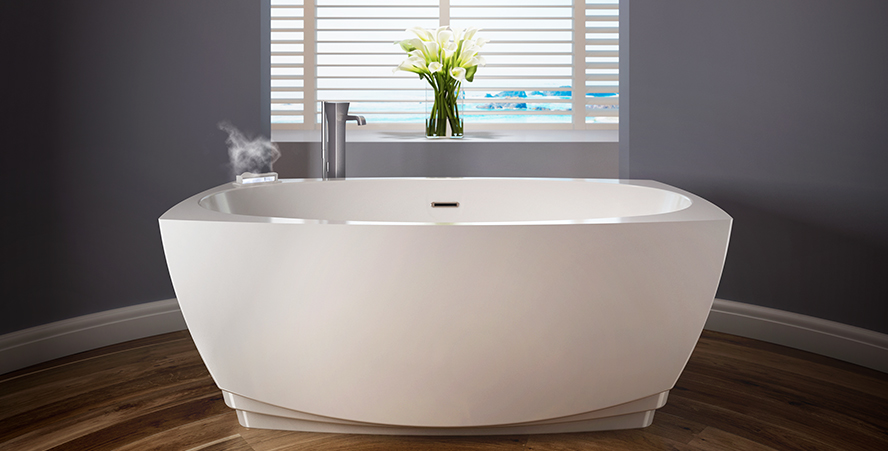While others use all kinds of materials, BainUltra only uses acrylic. For your consideration, here is a list of the most-used materials for bathtubs and their pros and cons.
Enameled Cast Iron
Advantages
- Highly resistant to bangs and scratches
- Colour stays bright (doesn’t fade or yellow much with age)
- Highly stable material, which means it’s a very good insulator (holds in heat)
Drawbacks
- Cast-iron bathtubs are very heavy (300–400 lbs)
- Have to be installed on reinforced flooring
- Fairly limited design options
- Can’t have integrated therapy systems, as these would visibly protrude from the bath
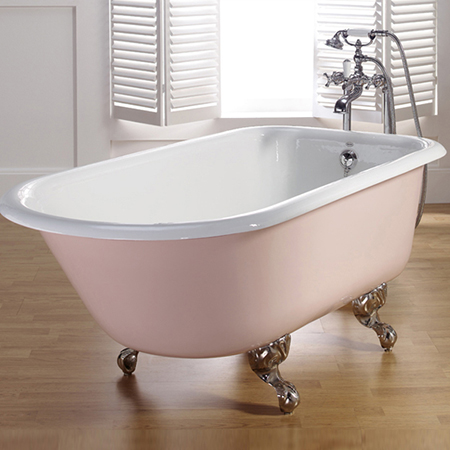
Enameled Steel
Advantages
- Lighter than cast iron
- Easy to move and install
Drawbacks
- Enameled steel is a poor insulator; loses heat rapidly compared to other materials
- Not recommended for prolonged bathing
- The enamel tends to chip off with age
- Entry-level bath; no integrated therapy systems
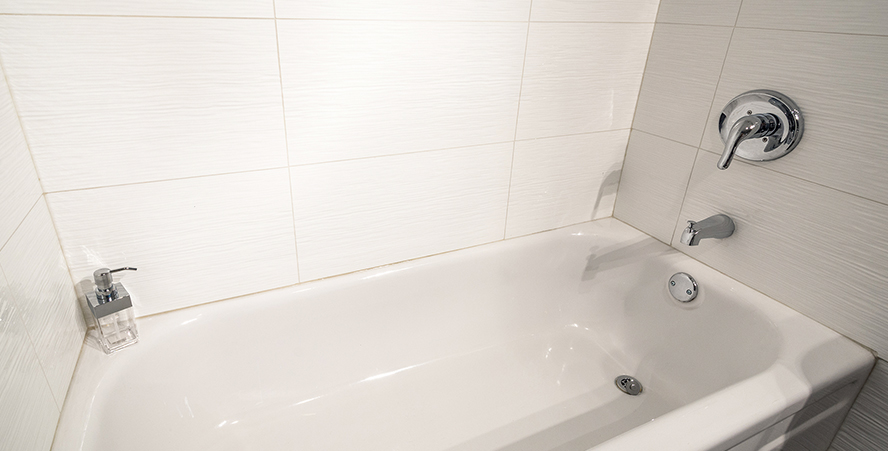
Rotomolded Polymers
Advantages
- Light bathtubs; possibility of integrating mood lighting (lights placed under the bathtub are reflected in the bath)
- Heat resistant
- Easy to move and install
Drawbacks
- So light they need to be fastened to the ground
- Mediocre insulators, so not recommended for prolonged bathing
- Air jets and other therapy systems can’t be integrated (mood lighting isn’t chromatherapy, because you can’t calibrate the frequency and wavelengths of the light)
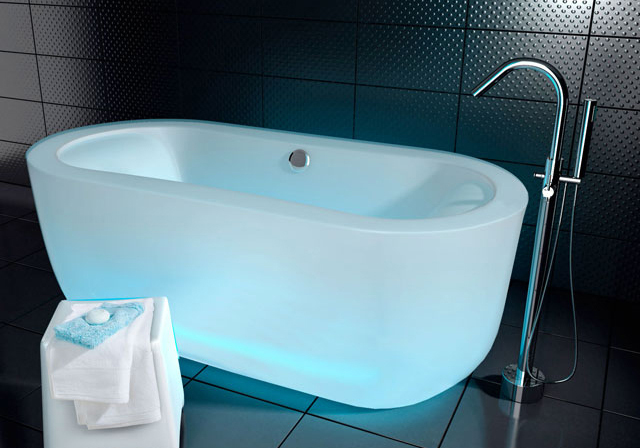
Concrete or Cast Polymer
Advantages
- Highly stable material; very good insulator
- Available in matte or glossy finish
- Material has a very nice look and feel
- Tub keeps sound in (high density provides acoustic insulation)
Drawbacks
- These bathtubs are very heavy because they’re cast as a single block (175–250 lbs)
- Can usually only be self-standing tubs because of the fabrication process
- Because of the casting process, the tubs can’t have hydro-thermomassage systems built into the bottom of the tub, which makes the bathtub less hygienic and the massages less effective
- Stains easily
- Glossy version is finished with a polyester resin (gel coat), which soon yellows/grows dull
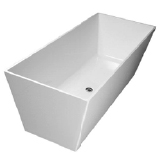
Reinforced Acrylic
Advantages
- Can be used to make light baths in a variety of shapes
- Holds in the heat, making it perfect for long baths
- Available in a matte or glossy finish
- Material looks and feels great
- Good for all types of designs, including welded free-standing, alcove, drop-in, and corner bathtubs.
- Can be used to produce 100% acrylic welded tubs, which have a very long product life
- Can integrate several therapy systems: hydro-thermomassage, heated back and head rests, chromatherapy, etc.
- Non-porous surface is stain-resistant and doesn’t harbour bacteria
- Very easy to clean and repair
Drawbacks
- Scratches easily
- Can be damaged by chemicals
- Only partly recyclable
- Rounded shapes only because of the molding process
